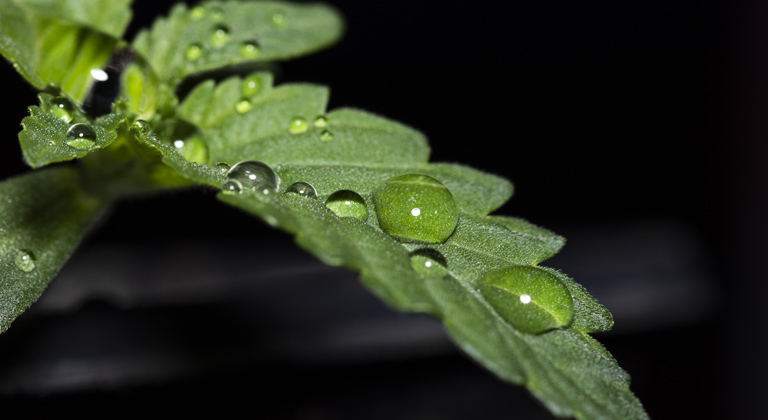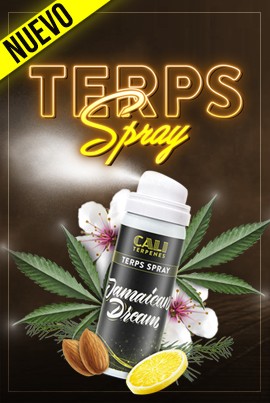Everyone that grows cannabis knows how dangerous insect infestations can be for your plants and how important it is to prevent them. If you’re just starting out when it comes to growing cannabis, you’ll need to learn the importance of preventing insect, fungi and pathogen attacks.
Without a decent prevention treatment different types of insects such as flies, spider mites, caterpillars, thrips and more can easily access your plants. These insects are easily capable of causing irreparable damage in your cannabis plants and they can even kill them off if they’re not detected in time.
When it comes to pest prevention in cannabis, you can use chemical products or biologically-sourced products. At La Huerta Grow Shop we’re in favour of natural and ecological pest prevention; it’s safer, better for the environment and it leaves much less residue on your cannabis plants. Plus, you can use these products during the flowering stage, which can’t be done with chemical products due to their residue safety period.
Ecological Pest Control for Cannabis Plants
One of the main practices when growing cannabis is keeping everything clean and hygienic; insect infestations and fungi are much more attracted to dirty environments, so you’ll need to pay special attention to cleaning and disinfecting your growing area and materials before getting started. This includes flowerpots, pruning materials, growing tents etc. In outdoor grows make sure to clean the area of any dead material or unnecessary plant material. You’ll also need to make sure to choose a spot free of insects and fungi.
Another factor to keep in mind are growing parameters such as temperature and humidity; if these factors go above the maximum recommended levels for cannabis plants it’ll be easier for insects to develop and flourish especially if the climate is humid and warm. When it comes to indoor grows, this aspect is much easier to control, whereas outdoors you’ll need to carefully select as spot that has decent ventilation and air flow for your plants.
You can also use certain tools which make insect prevention and detection much easier:
- Sticky traps are ideal for indoor and outdoor grows, obstructing the arrival of flying insects as well as letting you know if there’s a possible infestation on the horizon. These traps come in two different colours designed to attract different types of insects; yellow for white flies, moths and aphids, and blue for thrips.
- Indoor grows which have ventilation and air intake systems can easily benefit from an anti-insect filter on the outlet and inlets in order to stop insects from getting inside.
As well as maintaining good hygiene in your grow room, you can check out La Huerta Grow Shop’s wide range of bio insecticides designed to prevent insect infestations in cannabis plants. These products are made out of naturally sourced ingredients known for their insect prevention and repellent properties.
Some of the most common ingredients used in biological pest prevention can be found below.
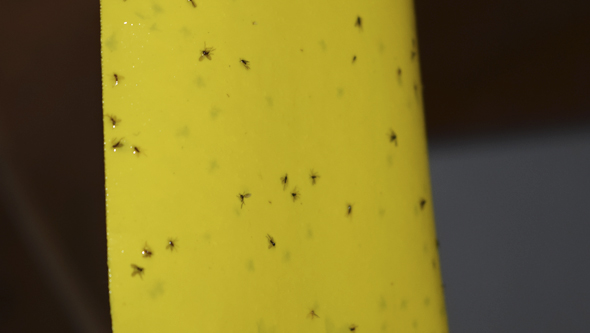
Neem Oil
Neem oil has been used for a long time in medicine and agriculture. It’s an organic extract that comes from neem tree seeds and fruit, which has the scientific name Azadirachta Indica, from the Meliacea family.
It’s a fast growing, perennial tree that can grow up to 20 meters tall when given the right conditions, with an average diameter of around 5 to 10 meters. Its root system grows into a highly developed swirling shape.
Neem oil’s properties have a lot to do with the fact that its structure is quite similar to that of real hormones; insects absorb it through their body as if it were real hormones and it blocks their endocrine system. This confuses the insects and stops them from reproducing, reducing their number considerably. Plus, neem oil also stops the metamorphic process in larvae, which stops them from moving from generation to generation.
Neem oil’s main effect is that it acts as a repellent; once it’s detect by insects, they’ll swiftly change course and choose a plant that isn’t bad for them. Preventive products and insecticides with high neem oil content act via ingestion and contact, especially when insects are still in their juvenile stages. It’s efficient, although it doesn’t have an instant effect, which means it needs a few days (6 – 8) to start becoming active.
How to Use Neem Oil
Neem oil can be used to prevent and fight off many insects, not just the most common insects in cannabis plants. Some examples are aphids, white flies, leaf miners, thrips, olive fruit flies and many more. It’s also effective when it comes to cannabis plants, ornamental plants, fruits and veggies.
An example of a great preventive product and insecticide made using neem oil is Bio Neem by prot-Eco, a product that can be sprayed or used when watering. For the best results, spray both sides of the leaves from the start of the growth period; you can keep using it until two weeks before harvesting.
It works much better as a preventive product when sprayed, although when used via watering it can also prevent against certain types of fungi and soil pathogens.
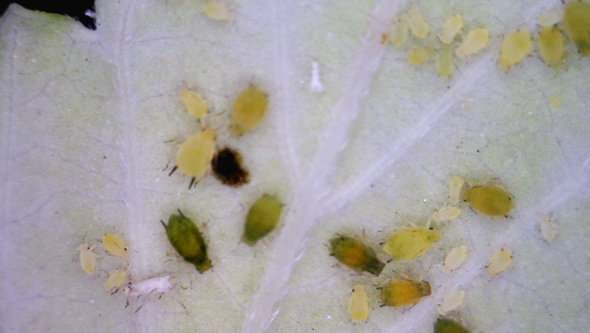
Insecticidal Soap
Insecticidal soap is a type of ecological soap made using potassium salts. It doesn’t contain any toxic ingredients, it’s biodegradable and is quite an efficient pest preventor that doesn’t cause any type of negative side effects. Plus, its high content in potassium is great for feeding the plants.
This product is capable of improving the efficiency and efficacy of other sprayed products (such as Bio Neem) and it also gets rid of any errant insects that may have managed to make their way onto your plants, preventing any possible future infestations.
How to Use Insecticidal Soap
This type of product is mainly used as a pesticide, although it can also be super important when it comes to preventing aphids, white flies, thrips, spider mites and other types of insects. This products essentially breaks the surface tension of your plants’ leaves, allowing other foliar products to be easily absorbed and distributed afterwards.
Mobet by Prot-Eco is a great example of an organic product made using potassium salts; it’s designed to protect and feed your plants via foliar applications. This product should be sprayed every 10 – 15 days as a preventive product during the growth and flowering stages making sure to spray under low lighting and heat.
Chrysanthemum Extract
Crysanthemum extract, also known as pyrethrin, has been used for centuries to prevent and fight off all types of insects. Pyrethrins can be extracted from various types of flowers, although most products designed for agriculture are extracted from chrysanthemum flowers. It’s used to prevent and fight off red spider mites, white flies, thrips, and caterpillars.
How Do Pyrethrins Work?
Pyrethins act via contact with insects or spider mites. Similar to previously mentioned products, this compound is highly biodegradable under sunlight and wind, although you can improve its efficiency by using insecticidal soap to break surface tension.
Spruzit is a product that’s rich in natural pyrethrins; this spray product is ideal for preventing insect infestations or eradicating them entirely. It also contains additional rapeseed oil, which is capable of getting rid of eggs and larvae, preventing what could be the start of an infestation. As a preventive method you only need to use it three times over the outdoor season, spraying under low light.
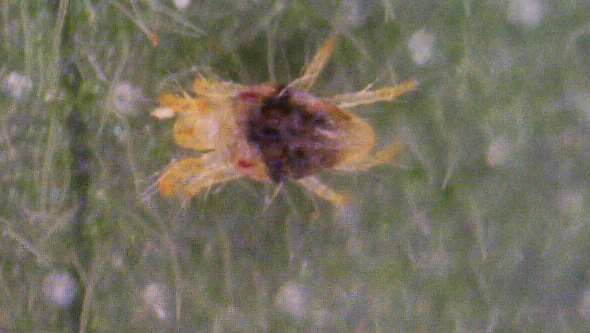
Compost tea
Another way to prevent unwanted insect infestations is by fortifying your plant from the inside, right from the start; insects will attack healthy, strong and non-stressed plants much less frequently than others. This can be done by using organic compounds designed to improve and increase your plants’ natural defenses. A good example of this is compost tea.
Compost tea is a type of ecological “infusion” in liquid format that has a high concentration of beneficial microorganisms and nutrients. It’s designed to feed your plants and increase microbial life in the substrate. Any microorganisms added to your soil via compost tea will begin a symbiotic relationship with your plants’ roots.
This process causes any residues in your substrate to decompose and become extra nutrients for your plants, improving growth and general plant well-being. The best part of this process is that the microorganisms added to your substrate reduce the risk of fungi and other types of insects in a completely natural way. This also reduces the need to use more aggressive products.
How to Make Compost Tea
Making your own compost tea isn’t that hard and it’s quite affordable; essentially, you want to make a liquid compost that needs to macerate for a certain amount of time. In order to do this you’ll need your own high quality compost, which you can easily make at home with organic leftovers without much of an effort. In order to avoid accidentally causing an infestation, make sure the compost is fully decomposed and has been refined and fermented.
You’ll need to use other ingredients in order to increase microbial life, such as worm hummus or other compounds that can act as food for the microbes such as kelp and molasses.
With these ingredients, water, a tank, a 400 micron mesh filter and something for moving the mixture around you can make your very own compost tea. Place the filter and water in the bucket, alongside al ingredients that aren’t the compost (hummus, kelp etc). and then add your fermented and refined compost. Let this mixture sit for about 36 – 48 hours. When you remove the mesh with the compost you’ll be left with compost tea; if it’s been made properly it should smell kind of nice, like wet earth.
Natural Predators
One of the most eco-friendly and efficient ways to prevent insect infestations in cannabis is by adding natural predators to your grow. Nobody likes seeing insects on their plants, although there are a few different types of insects are natural predators of some of the most common cannabis insects.
Ladybugs
Ladybugs, as well as being pretty and giving your garden a hint of colour, are insatiable and feed off of aphids, spider mites and even small caterpillars. These are some of the easiest insects to get, although it can be hard to keep them around. If they’re let out at night, are kept hydrated by spraying your plants and have flowers with nectar nearby for reproductive purposes, they should stick around.
Spiders
Spiders feed off of all types of insects, including some of the most common insects that attack cannabis plants. However, make sure that you’re getting hunter spiders, as these are the ones that actively attack insects on your plants. Don’t get these mixed up with red spider mites, one of the most dangerous infestations for cannabis plans.
Hover flies
Hover flies, also known as flower flies, look a lot like bees, although they’re completely harmless for people. The most interesting thing about these flies is that they eat aphids, spider mites and thrips in their larvae state, adding an extra layer of protection with each new generation.
Spider Mites
It may sound slightly counter-intuitive, because spider mites are some of the most common infestations in cannabis plants, but there are a couple of types of mites that actually feed off of red spider mites. These are Phytoseiulus Persimilis and Amblyseius Californicus. The first of these two is highly efficient although it needs specific parameters, whereas the second isn’t quite as powerful but it requires less maintenance.
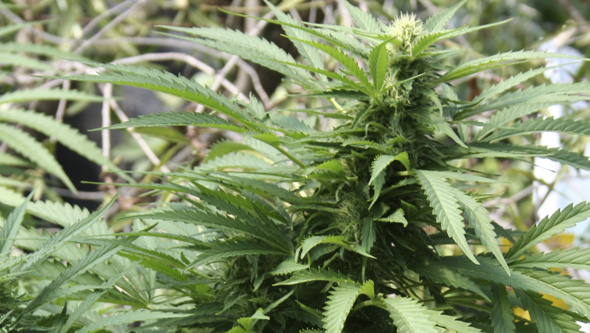
How to Get Natural Predators
This is a method used by growers all around the world in order to defend their plants. One of the best ways to attract natural predators to your grow is by using beneficial plants known for attracting these types of natural predators. Some examples of these are:
- Dill: this plant acts as a repellent for spider mites and caterpillars as well as attracting ladybugs.
- Lavender: this is also used as a repellent for various insects and also attracts multiple beneficial insects to your plants.
- Nasturtium: this easy to grow plant has colourful and eye-catching flowers and also attracts lots of beneficial insects.
- Borage: this plant is used to attract flower flies and bees, which help tot pollinate the rest of the plants in your garden and will improve their ecosystem.
If you want to know more about how to prevent insect infestations in cannabis plants, get in touch with our team of professionals or leave a comment; we’ll answer all of your questions!
